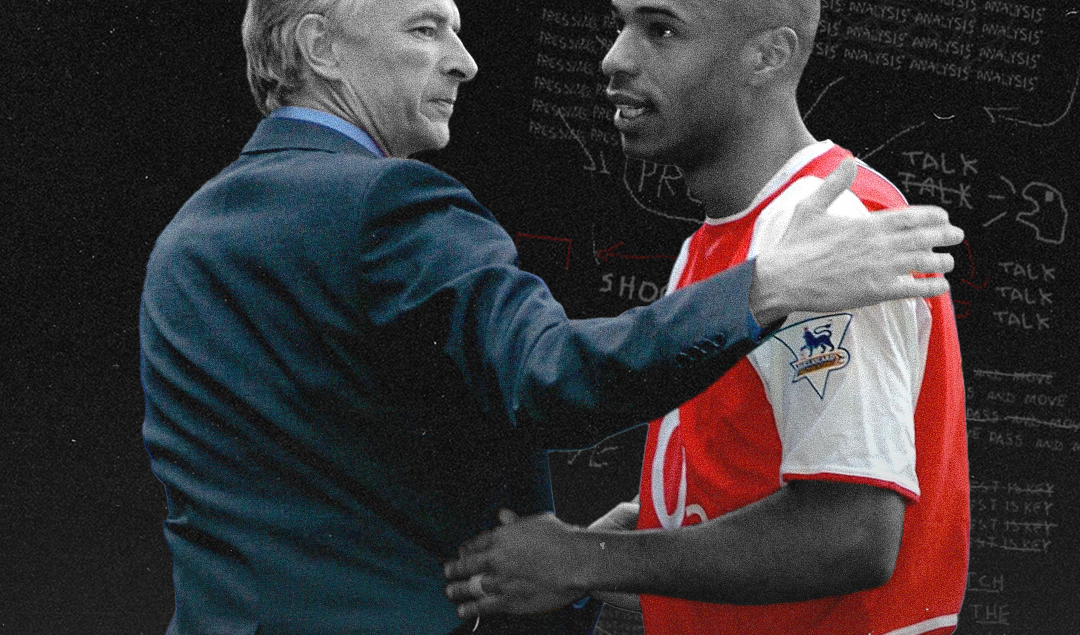Breaking Down Arsenal’s 2003/04 Invincible Season
“It’s not impossible to go the season unbeaten and I can’t see a reason why it’s shocking to say that”-Arsenal manager Arsene Wenger.
This statement was largely met with ridicule by the British media ahead of the 02/03 season. And when the 02/03 season ended, it seemed like the media was proven right as that season Arsenal went on to lose six matches and finished second behind Manchester United.
But the very next season, Wenger proved it was indeed possible to go through the season without losing a game as they became the first team to win the golden Premier League trophy and to this day remain the only side to have ever done that. With a few tweaks to his 02/03 team, Arsenal looked unstoppable.
Balancing the 4-4-2
While the 02/03 side wasn’t unbalanced by any means, they did put a lot of emphasis on this in the 03/04 season. Wenger utilized pairings as a means to balance the dynamics of the team’s preferred movement. For every player who looked to run into space, there would be a player who would either cover the space left behind or provide an opportunity for the player to run into.
Wenger had a Clear preferred starting eleven with the occasional tactical swaps in between match days. In Goal, Lehman would start. The backline consisted of Ashley Cole, Sol Campbell, Kolo Toure who was originally a defensive midfielder, and Lauren.
Patrick Viera and Gilberto Silva would play in the pivot of the 442 with the wide players usually being Robert Pires and Freddie Ljungberg. And of course, Thierry Henry and Dennis Bergkamp were paired together to form a now-iconic strike duo.
The way these pairings would work was there would always be a cover provided to the runner which in this case meant the structure could almost resemble an asymmetrical 4-2-3-1.
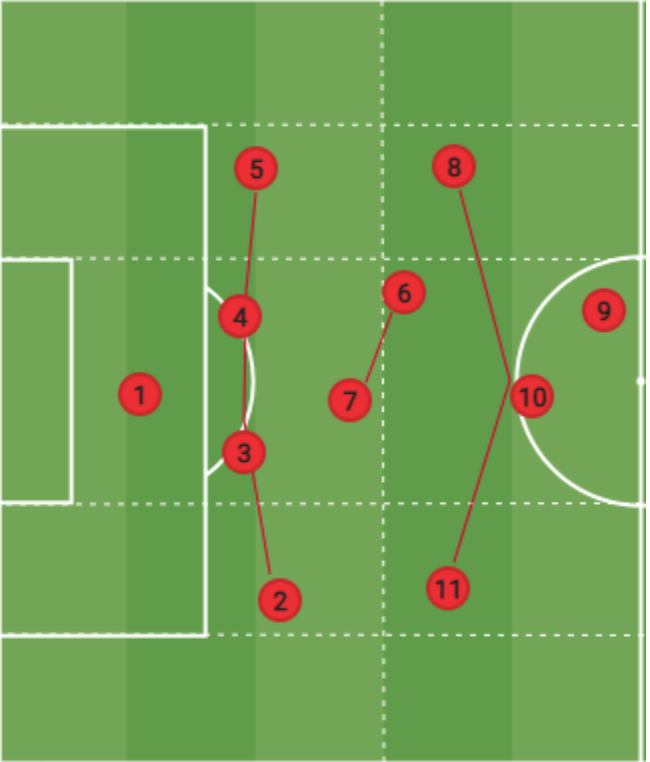
The Build-up Play
In contrast to what many believe due to the post 2007 arc of Wenger’s time at Arsenal, this was not a possession-focused side. Instead this team looked to move the ball with speed vertically. Yes, much like united they did dominate most of their games in terms of possession but this was mainly due to them being the better side on most occasions.
The goal here was to release the pacey players they had in attack. Note this also did not make them a primarily a counter-attack focused team, but rather a team that would look to penetrate the defense as much as possible, and win it back as quickly as possible, similar to United.
At the back, Jens Lehman was quick to distribute the ball to the center backs. Mainly, Kolo Toure would get on the ball as he was experienced in midfield transitioning as a ball-playing center back was not a difficult job for him.
He was comfortable on the ball and could make the quick distribution decisions needed as most teams of that era would also line up in a 4-4-2.
From midfield, Gilberto Silva would drop just ahead of the back line and position himself centrally to provide a good passing angle. This staggering was followed by Dennis Bergkamp doing the same forming the asymmetrical 4-2-3-1.
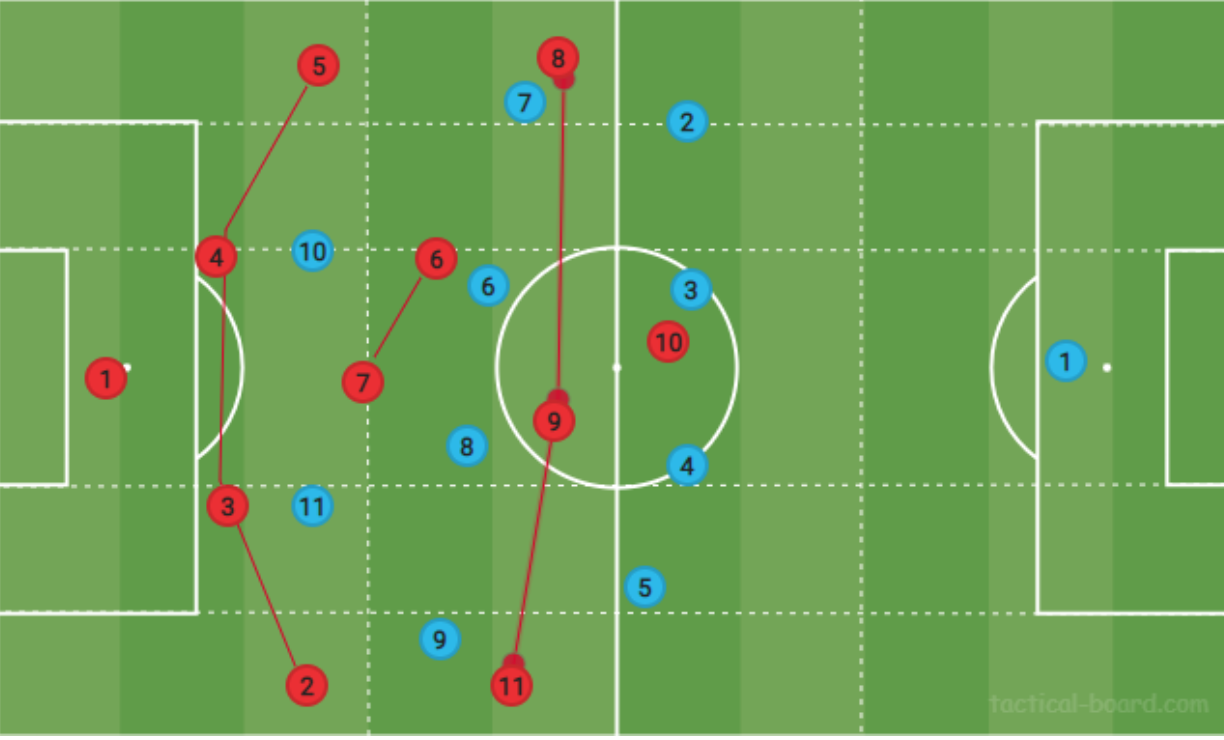
Staggering the line meant that Arsenal would have men in between the lines if the opposition maintained their 4-4-2 shape, but when pressed this also gave them passing angles to beat the press. Viera in the buildup phase would not move too high on the pitch and instead would provide a passing option.
Central Overloads
The staggering also gave them a 3v2 Advantage in midfield which they would use to move higher up the pitch, eventually using it to maintain possession.
This central overload could be further exploited as Pires would move infield into the left half space. This would naturally attract pressure and leave the wider channels free of players, so Ashley Cole would be more than happy to occupy the width created.
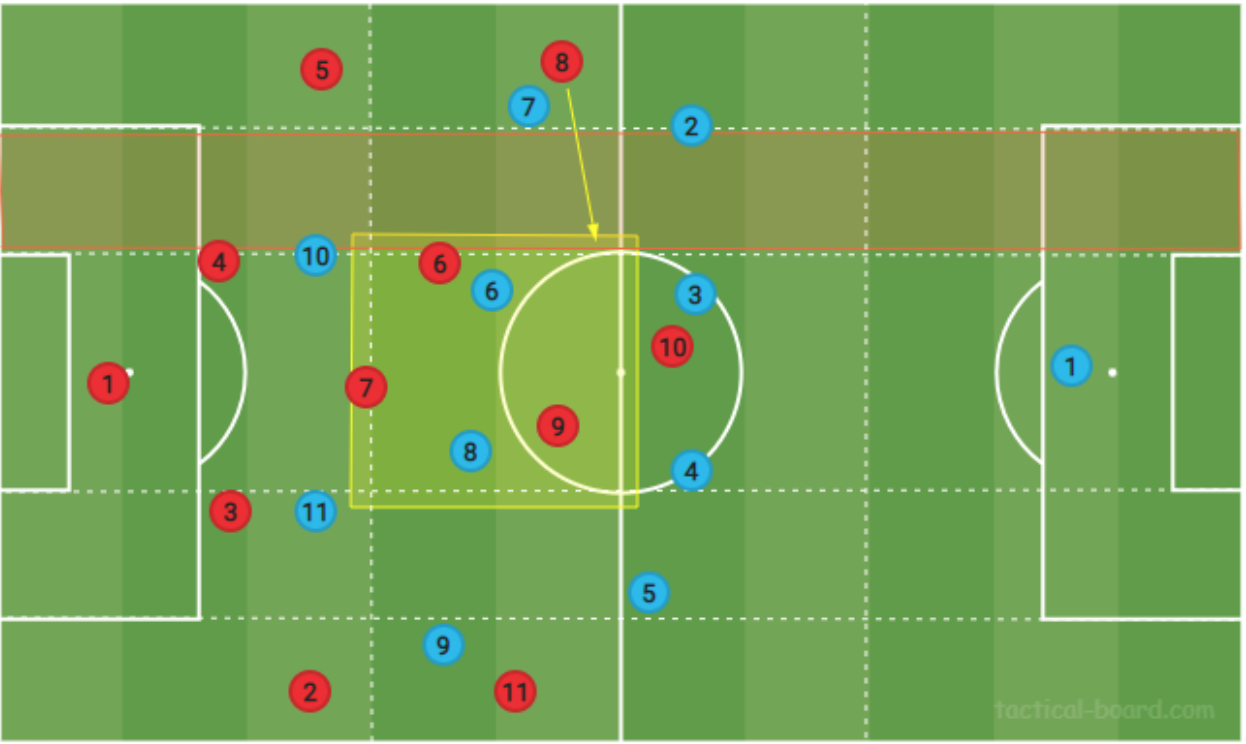
On the right, Lauren was capable of attacking but with Ljungberg often holding the width would mean he would play a more conservative role.
This overload allowed them to look for Bergkamp more often and use him as an orchestrator, with Viera often looking for a third man run. This overload also allowed them to switch the play when team did play narrower, Arsenal could just cross the ball and overload the box with darting runs from the central players.
Mid-block Out of Possession
When they lost the ball, Arsenal would press, mainly to force an error by limiting their options playing long or winning the ball back by engaging in 1v1s.
Bergkamp and Henry would press alongside each other and force the ball wide by blocking the center of the pitch. The two wide men pressed when the opportunity arose supported by Viera with Silva often providing cover.
The back four would remain compact but would squeeze the pitch by playing a highline and would often play an offside trap. Lehman was a commanding goalkeeper who would often sweep up any balls that went too long.
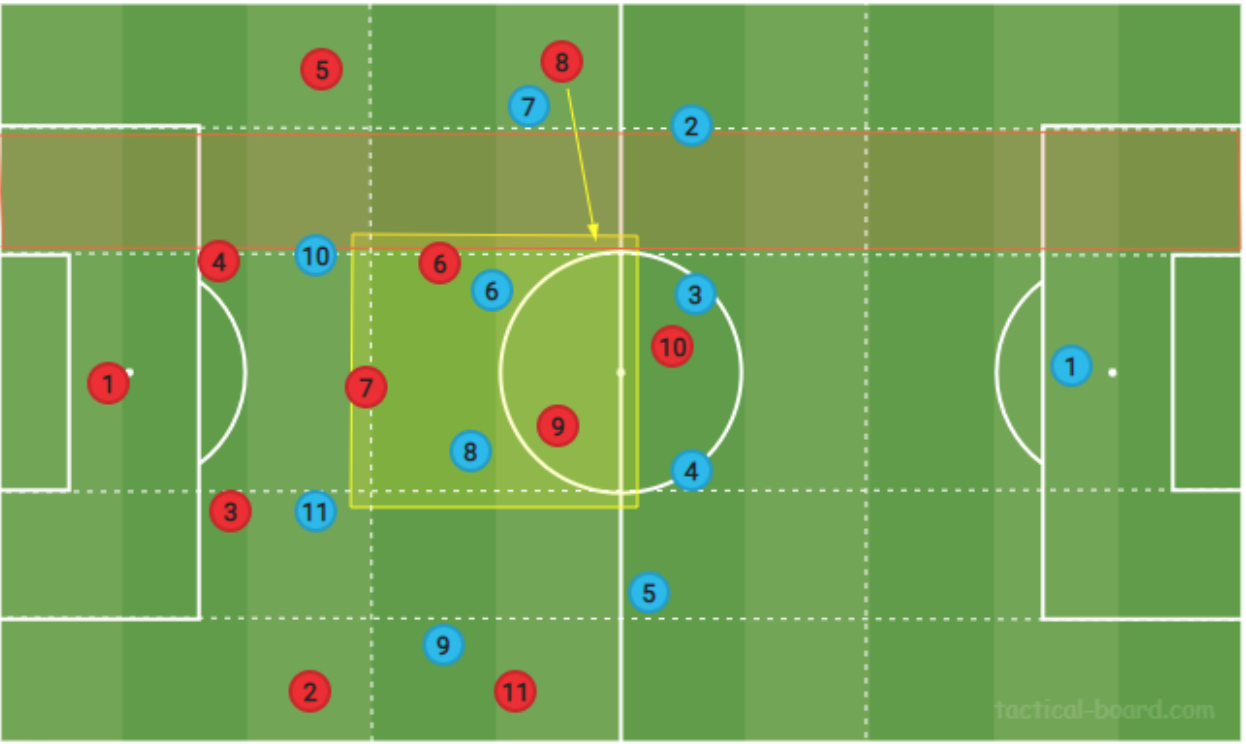
Low Block
When they did defend deep, Arsenal would remain compact horizontally but would maintain their distance long enough for them to play on the counters. This forced the ball wide and and they could then win their aerial duels and look to counter.
On the break, they were devastating as the front four had the positional fluidity to confuse markers to penetrate the defense.
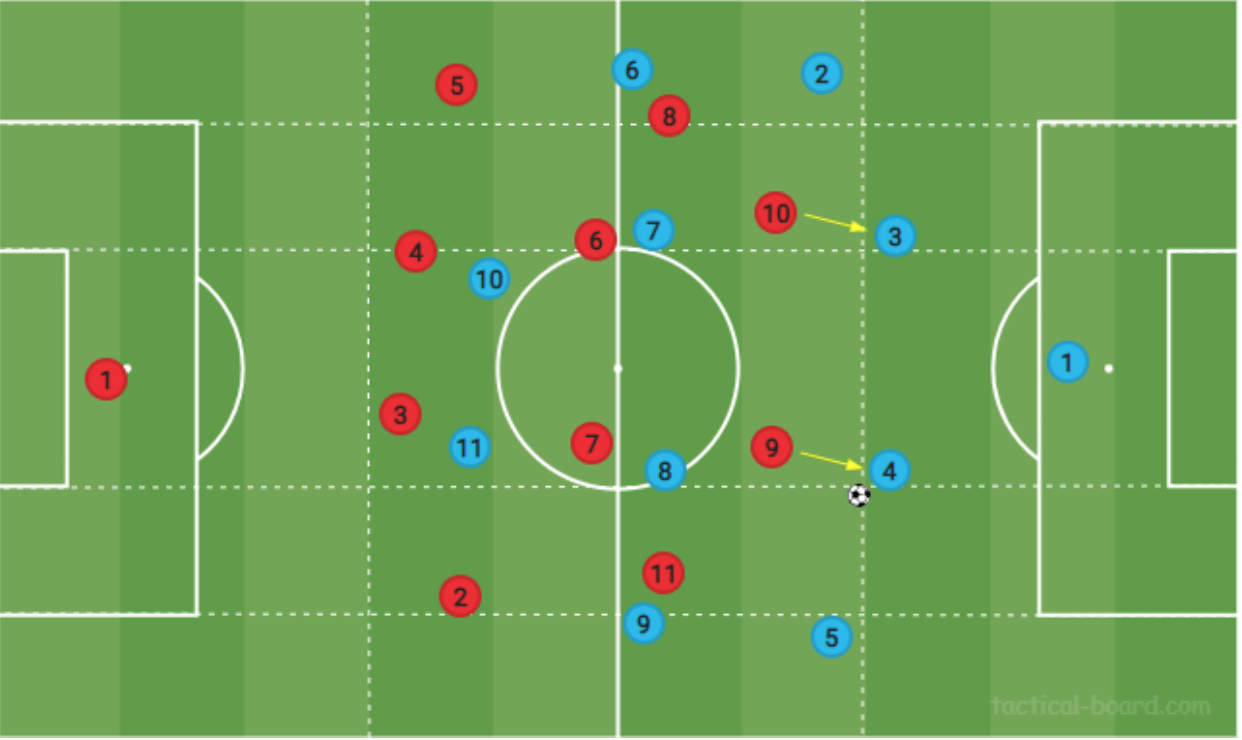
Conclusion
Arsene Wenger created a team that had a clear tactical identity. With a focus on pace, with the ability to make key passes usually through the center made them a team incredibly hard to beat.
This wasn’t a team that was tactically better than other teams, but rather a team in which the players understood the dynamics of their counterparts and use this understanding to make good calculated decisions allowing them to operate as a unit consistently throughout the season.
It has been 18 years since Arsenal’s unparalleled Invincible season and the last Premier League title for the North London side. They have drifted further and further from the top, having finished eighth in back-to-back seasons and missing out on Europe for the first time in a quarter-century.
However, with just five matches remaining in the 2021/22 Premier League season, the odds are in Arsenal’s favor in their bid to end a five-year absence from Europe’s elite competition and return to the Champions League which been now is been disputed by four teams were the English giants are listed as co-favorites at +125 odds.
By: Arhum Siddiqui / @MrArhumSiddiqui
Featured Image: @GabFoligno / Tony O’Brien – EMPICS / PA Images
